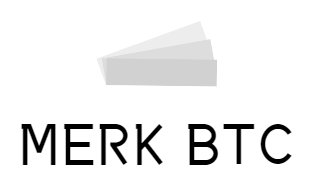AI-Powered Retail Stores Driving Blockchain Applications Define Safety and Efficiency

In today’s digital age, the combination of blockchain and Artificial Intelligence (AI) stores is initiating a technological revolution aimed at optimizing blockchain operations and enhancing security through AI, bringing unprecedented changes across various industries. This innovative integration not only addresses the challenges of scalability, efficiency, and security faced by blockchain technology but also significantly expands its application range, from financial services to supply chain management, and from smart contracts to personal privacy protection, demonstrating its potential and value.
The Fusion of AI and Blockchain
Blockchain, a decentralized distributed ledger technology, provides a secure and reliable platform for digital transactions through its immutable and transparent characteristics. However, as applications continue to grow, it faces challenges such as slow processing speeds, high energy consumption, and difficulty in scaling. This is where Artificial Intelligence technology comes into play, with its capabilities for algorithm optimization, pattern recognition, and automated decision-making, to address these issues. AI can analyze vast amounts of blockchain data, using machine learning models to predict the security and validity of transactions, effectively preventing fraud and erroneous transactions. Additionally, AI can enhance the operational efficiency of blockchain networks by automatically adjusting system parameters and optimizing data storage and processing, thus reducing energy consumption and increasing processing speed.
Enhancing Security
In blockchain technology, security has always been one of the most focused issues. Introducing AI can greatly strengthen the security defenses of blockchain systems. AI systems can monitor transactions and activities in real time, using anomaly detection algorithms to promptly identify and prevent potential security threats, such as double spending and 51% attacks. Furthermore, AI’s natural language processing capabilities can be used to analyze smart contracts, automatically identifying vulnerabilities and potential risks in contracts, ensuring the security and reliability of smart contracts. This is crucial for preventing smart contracts from being maliciously exploited.
Improving Blockchain Efficiency
AI technology can not only enhance the security of blockchain but also significantly improve its efficiency. AI algorithms can optimize the consensus mechanism of blockchain networks, reducing the time and resources needed to verify transactions. For example, by predicting which transactions are most likely to be accepted by the network, these transactions can be prioritized, thus speeding up the overall network processing speed.
AI can also optimize the storage and retrieval of blockchain data by analyzing transaction patterns and user behavior, reducing data redundancy, and increasing the speed and efficiency of data processing. This is vital for addressing the scalability issues of blockchain.
Application Prospects
The combination of blockchain and AI is already demonstrating its vast potential in various fields. In the financial sector, they can provide more secure and efficient payment and transaction solutions; in supply chain management, they offer transparency and tracking capabilities while optimizing inventory management through predictive analysis; in the healthcare sector, they ensure patient privacy while securing data sharing and utilization.
Conclusion
The combination of AI and blockchain is bringing a revolution to the digital world, redefining our understanding and application of technology by enhancing safety and efficiency. Although this field is still in the early stages of exploration, its potential impact is already evident. As technology continues to advance and applications deepen, there is reason to believe that AI-driven blockchain technology will shape a safer, more efficient, and transparent digital world in the future.
